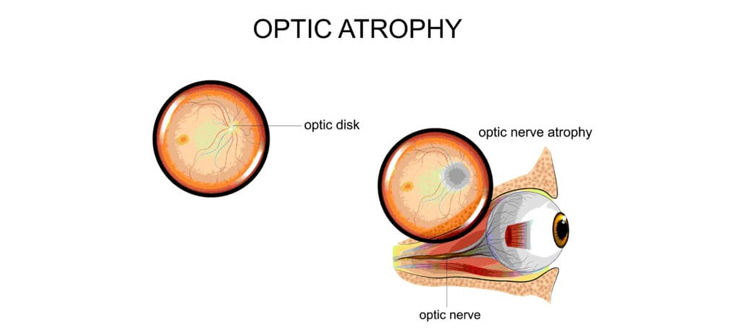Optic atrophy is a medical condition characterized by the degeneration or damage of optic nerve, which is crucial for transmitting visual information from the eye to the brain. This degeneration leads to a gradual loss of vision.
In South Africa, Optic atrophy can have various causes, ranging from traumatic injuries and infections to hereditary factors. Head trauma, especially affecting the optic nerve, can lead to optic atrophy. Infection such as optic neuritis, often associate with conditions like multiple sclerosis, can also contribute. Genetic factors play a role, and some individuals may be predisposed to optic nerve disorder. One significant contributor to optic atrophy in South Africa is infectious diseases.
Conditions like tuberculosis and HIV/AIDS, which may lead to optic nerve damage if not effectively managed.
The hallmark symptom of optic atrophy is a progressive loss of vision. Initially, this, may manifest as blurred vision or difficulty with color perception. As the condition advances, individuals may experience a constriction of their visual fields, leading to tunnel vision. Visual acuity diminishes over time, impacting daily activities and quality of life.
Unfortunately, optic atrophy is often irreversible, and treatment focuses on managing underlying causes related to inflammation, anti-inflammatory medications may be prescribed. Addressing contributing factors such as high blood pressure or diabetes is also essential.
Optic atrophy not only affects visual function but can also have profound psychological and emotional impacts. Individual may experience challenges in daily activities, impacting their independence.
Stem Cell Treatment for Optic Atrophy in South Africa: –
Stem cell treatment for optic atrophy in South Africa, and the involvement of companies like “Stem cell cure India”, reflects the global pursuit of innovative therapies for vision-related disorders. Stem cell therapy holds promise in addressing optic atrophy by harnessing the regenerative potential of stem cells.
Companies like “Stem Cell Cure India” are at forefront of advancing stem cell treatments for various medical conditions, including optic atrophy. Their approach involves extracting and processing stem cells.
Stem cells have ability to differentiate into various cell types, including those found in the optic nerve. This regenerative potential could aid in repairing damaged optic nerve tissues associated with optic atrophy.
Stem cells may exhibit neuroprotective properties, helping to shield existing optic nerve cells from further damage. This could slow down the progression of optic atrophy and preserve remaining vision.
In case where inflammation contributes to optic nerve damage, stem cells may have anti-inflammatory effects. This could mitigate the inflammatory response. Stem cells may enhance blood supply to the optic nerve, promoting better oxygen and nutrient delivery. Improved vascularization can support the overall health and function of the optic atrophy.
In conclusion, while stem cell therapy for optic atrophy have potential benefits include tissue regeneration, neuroprotection, and anti-inflammatory effects, the efficacy and long-term outcomes of stem cell treatments for optic atrophy. Stem cell cure India contribute to advancing our understanding and unlocking the full potential of stem cell therapy for optic atrophy.

